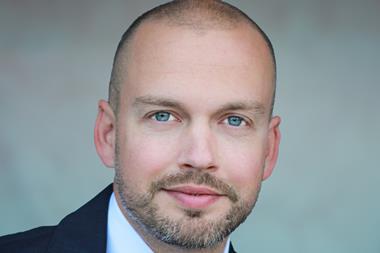Alfred Kool suggests a way in which pension funds can organise the communication of information to their members in an efficient and professional way.
Research by the PensioenKijker Foundation, a body that has taken on the key task of stimulating good pension communication, shows that only 15% of the Dutch population has an adequate knowledge of their pension. The good news is that this awareness has risen from the previous figure of 10%. The bad news is that the remaining 85% has a woefully inadequate knowlege of their pension scheme.
There is clearly still much work to be done by pension funds and insurers. Dick Sluimers, the chairman of the board of managing directors at ABP, the fund for civil servants, has spoken for the pension fund industry by emphasising the need for effective pension communication.
The new pension law, which came into effect at the beginning of the year, makes pension funds responsible for ensuring that they maintain proper communication with their members. The Dutch market regulator AFM has been given the task of ensuring that they do so.
The intentions are good, and most funds are willing to take steps to improve their communication policy. The problem is how.
Effective pension communication has become increasingly important. Pension fund members are confronted with the retrenchment of schemes and lower pension results. The ageing of the population also puts pressure on pensions providers.
Employers are now considering pensions not only in terms of conditions of employment but also in terms of risk management, since an employee could sue an employer for poor investment decisions.
The new pension law prescribes that participants should be able to ‘consume' the contents of the scheme, and be able to take responsibility for their own decisions.
This places an obligation on a pension fund to have a clear communication policy. The employer, the pension fund and the pension administrator are all responsible for this policy.
But what is effective pension communication? One definition is that it is when participants in a pension fund, drawing on the information they have received, act as expected in terms of knowledge, attitude and behaviour.
This requires the following conditions for communication: a recognisable and trusted ‘sender'; an appealing communication; a relevant message; clear and understandable content; feedback.
Achieving effective pensions communication requires a mutual effort by the employer, pension fund and administrator; an integrated approach to the information and communication process; and a controllable, manageable and quantifiable process. Above all, it requires a thorough knowledge of the members of the scheme, who should be considered as clients.
One method of communication, PensionControl, was launched by the author and Jac Baas in September. PensionControl enables a fund to organise and arrange the pension information and communication process in an efficient and professional way.
Depending on the situation of a specific pension fund, the focus may be on risk management, policy concerning conditions of employment, process management, cost control or performance. PensionControl is a methodical approach which stimulates the integration of core competencies.
In the flow chart in (above) the PensionControl risk management model shows all the aspects of the pension information and communication process, the key players, and their connections and mutual responsibilities.
PensionControl enables funds, insurers and administrators to arrange client-specific, personalised and measurable communication which aligns with the needs, possibilities and targets of all concerned parties. The method connects the three essential disciplines for the information and communication process: communication, information technology and database and document management.
Employers, pension funds, administrators and insurance companies are responsible for the efficient execution of the process of information and communication, and of the effect of it. That includes tuning the pension message to the characteristics of the participants in order to obtain effect. Pension communication thus became a complex and important obligation to deliver knowledge. The effectiveness of that information and communication process can only be achieved when it is arranged in a professional way. A thorough analysis and a clear vision on the necessary communication policy form the fundamentals for a well-structured and organised execution of that policy. It includes measurable goals and controllable costs. PensionControl stimulates a professional approach with respect to existing situations, investments, interests and goals of all relevant parties.
In most cases the focus will be on optimalisation and integration of processes that are already operational. PensionControl demonstrates the wanted or necessary improvements, based on a targeted analysis. This analysis is the basis for a project definition.
PensionControl covers the entire flow of information and communication within the criteria of the Pension Law, pension fund governance and the duty to provide for.
The responsibility for the process of information and communication is in most cases divided between various departments. Disciplines with a diversity of responsibilities and possibly also obvious incompatible interests.
The starting point for PensionControl therefore is an audit in which all related co-processes are being investigated, including their interfaces. Only then does it become possible to link and integrate the processes.
Based on that audit, targets are set and translated to a realistic project definition. Logical next steps are the definition of deliverables, demarcation of responsibilities, planning and a budget indication.
The model was created by combining knowledge and experience in the area of communication- and information management. Its creators believe the method serves the interests of all concerned parties in the area of pension information and communication.
Alfred Kool is co-founder of Kool & Baas Pensioencommunicatie












No comments yet